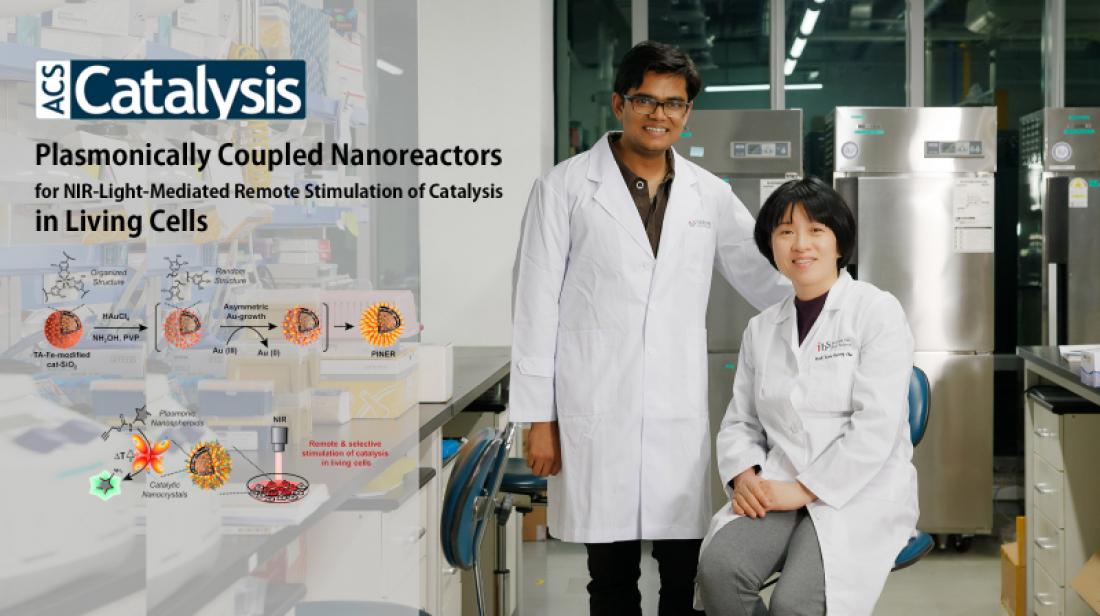From left are Dr. Sumit Kumar and Professor Yoon Kyoung Cho in the School of Life Sciences at UNIST.
A new study, affiliated with UNIST has introduced an artificial catalytic reactor that can take control of chemical reactions inside living cells, as desired. Besides, the new material capable of remotely controlling the near-infrared (NIR)-light, is expected to provide real-time monitoring of drug interactions and chemical reactions without adversely affecting the survival of the cells.
This breakthrough has been led by Professor Yoon-Kyoung Cho and Dr. Sumit Kumar in the School of Life Sciences at UNIST in collaboration with Professor In Su Lee and Dr. Amit Kumar from Pohang University of Science and Technology (POSTECH).
In this study, the research team has designed and synthesized plasmonically integrated nanoreactors (PINERs) with highly tunable structure and NIR-light-induced synergistic function for efficiently promoting unnatural catalytic reactions inside living cells.
Human bodies sustain life thanks to numerous complex chemical reactions that happen simultaneously within their systems. Therefore, new medications taken into the body may modify or affect such chemical reactions. To test this in advance, scientists often plan for cell response experiments. In particular, the development of artificial catalytic reactors, capable of remotely controlling both the reaction times and stimulation, has been the long-cherished goal of many scientists.
Herein, Professor Cho and her research team disclosed the design and synthesis of PINERs, consisting of reactantaccessible internal catalytic nanospace enclosed by proximal and highly coupled plasmonic Au-nanospheroids, for NIR-light mediated remote stimulation of catalytic reactions inside living cells. For the well-controllable installation of plasmonic nanospheroids in PINER, we introduce a strategy involving metal−organic coordination polymer nanofilm which undergoes phase-transition during the synthesis and guides the asymmetric growth of Au-nanospheroids while protecting the catalytic size of internal nanocrystals (NCs).
The obtained Au-PINER design is composed of two components: (i) the interior catalytic component, where small size (ca. 2 nm) catalytic nanocrystals are located within the porous silica compartment, and (ii) the surrounding plasmonic component, consisting of arrays of large size (15 nm) plasmonic Au-nanospheroids with close interparticle nanogaps (1 nm).
The team discovered that the present PINER design not only affects remotely controllable efficient catalysis, but also provides spatiotemporal control to stimulate catalysis in selected cell population.
Besides, their synthetic approach toward PINERs has wide scope of diversification in modifying different catalytic functionalities for realizing a variety of reactions with the facility of promoting sluggish reaction rates by remotely operable NIR light. In the future, PINERs can be extended to the development of highly selective theranostic platforms switchable in the response to the biorthogonal catalytic reactions.
The findings of this study has been selected as the Supplementary Cover of the February 2019 issue of ACS Catalysis. This study has been supported by the Basic Science Research Program through the National Research Foundation of Korea (NRF) funded by the Ministry of Science, and ICT (MSIT).




